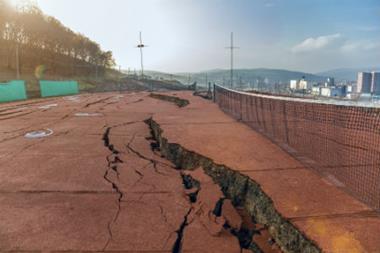Many structures in the affected region were not designed to withstand earthquakes, says USGS
On 6 February, 2023, two powerful earthquakes of more than 7.5 magnitude struck near the south-eastern Turkish cities of Gaziantep and Kahramanmaras – the country’s sixth and 18th largest cities.
The earthquakes rank among the worst tremors in the country’s history and resulted in widespread devastation as well as the loss of thousands of lives in both Türkiye and northern Syria.
Though an earthquake of this magnitude is rare anywhere in the world, this type of event is generally expected on long, plate-boundary strike-slip faults.
“It’s difficult to watch this tragedy unfold, especially since we’ve known for a long time that the buildings in the region were not designed to withstand earthquakes,” said USGS scientist David Wald.
“An earthquake this size has the potential to be damaging anywhere in the world, but many structures in this region are particularly vulnerable.”
Following the first tremor, the US Geological Survey estimated that economic damages will exceed $1 billion.
“This earthquake produced intense shaking in the epicentral region,” said USGS scientist Kishor Jaiswal.
“While newer buildings in other parts of Turkey (like Istanbul) are designed with modern earthquake standards in mind, the area affected by this earthquake included more vulnerable buildings, like older types of concrete frames that were not designed from seismic considerations to absorb this much ground motion.”
Catastrophe risk pool triggered
Since 2000, earthquake insurance has been compulsory for private dwellings and is covered by the national Turkish Catastrophe Insurance Pool.
The pool retains risk, but also uses traditional international reinsurance and has previously dipped into alternative capital markets through the issue of catastrophe bonds.
The TCIP’s latest published annual report shows reinsurance cover incepting in 2021 had a lower limit of TRY 5.0 billion (USD 0.4 billion as at 31 December, 2021) (unchanged from the previous year), while the upper limit stood at TRY 36.9 billion ($3.2 billion).
Munich Re and Swiss Re had the highest risk shares in the excess of loss programme, with the remaining capacity understood to be provided by international reinsurers in Europe, the London market and Bermuda.
”While it is likely that international reinsurance markets will pick up a proportion of the losses, AM Best notes that these events occur at a time when (re)insurers in Türkiye are facing an extremely challenging operating environment, characterised by significant inflation and a weakening currency,” observed AM Best in a commentary.
”Following contrarian economic policy by the Central Bank of Türkiye, annual inflation rose drastically in 2022 in the country, peaking at 86% in October. The Turkish lira lost almost 30% of its value against the US dollar in the year.
”AM Best estimates that this deterioration of the economic conditions in the country meaningfully increased the asset and underwriting risks of many (re)insurers operating in Türkiye, weighing on their risk-adjusted capitalisation.
“In addition, investment returns, on which many market participants had relied in the past, have become insufficient to compensate for poor underwriting experience, limiting internal capital generation.”
Large protection gap expected
While initial information indicates that insurance penetration in the region is relatively low compared to the most populous centres in Western Türkiye.
The TCIP does not cover commercial property and earthquake insurance is not compulsory for businesses. However, it is market practice for earthquake cover to be included in policies issued by local (re)insurers.
The latest figures from TCIP suggest compulsory earthquake insurance penetration at around 52% in the region most affected by the latest incidents.
As a result, AM Best expects that – as with previous natural disasters in the country – there will be a significant variance between the economic and insured losses from the two earthquakes.




















No comments yet